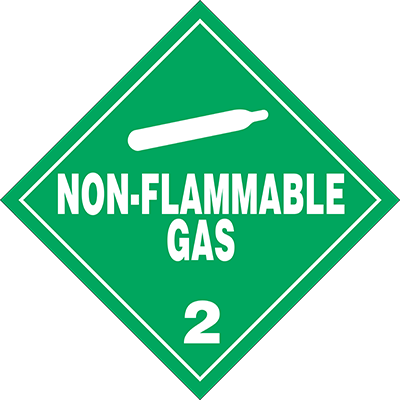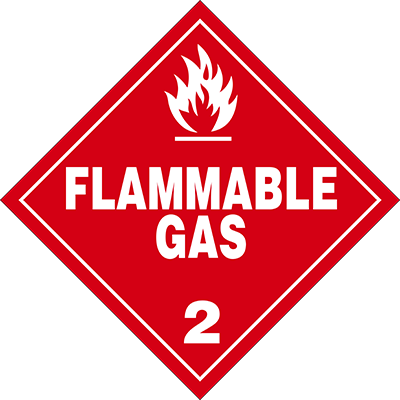Pick-up from Supplier
When you pick up full cylinders from your supplier (considered the shipper), your supplier must properly mark and label cylinders in strict accordance with DOT regulations. In this scenario, you become the “carrier.” Your supplier must give you the following DOT-required documentation: A proper shipping paper describing the hazardous materials. This shipping paper will additionally display the supplier’s signed shipping certification and his/her Emergency Contact Telephone Number. Emergency Response Information for the hazardous materials carried if you do not already have it in your vehicle. Most suppliers use a one-sheet handout for most products sold through “will call.” Other suppliers may use something similar, such as a qualified MSDS or the DOT “Emergency Response Guidebook.”
If your cylinder load is 1,001 pounds or more gross weight, your supplier must offer you placards. It is your obligation to affix the placards to the front, rear, and both sides of your vehicle only during the time the load is on the vehicle. In addition to affixing the placards (see bottom of page), when required, you have the following responsibilities:
When driving a vehicle of any size that is required to be placarded, you must have a Commercial Driver’s License endorsed, at least for hazardous materials.
Maintain the shipping paper and emergency response information (or copies) in the vehicle within reach of the driver as long as the vehicle is carrying hazardous materials.
Secure the cylinders in the vehicle to prevent motion between the cylinders and between the cylinders and the vehicle.
Pick-up from your warehouse
Some suppliers deliver cylinders to their customer’s warehouse, plant or business. When you load cylinders from your inventory onto your transport vehicle, then you become the shipper and the carrier. As shipper, you now have responsibilities similar to your supplier, enumerated in the will-call scenario above. Cylinders should already be properly marked and labeled by your supplier. If any cylinder in your inventory does not have, in good condition, a shoulder neck label (marking and diamond), or separate marking and diamond, you must not transport the cylinder. When transporting cylinders from your inventory, you must supply and carry the following DOT-required documentation:
A proper shipping paper describing the hazardous materials. This shipping paper will additionally display your signed shipping certification and your Emergency Contact Telephone Number which can be reached during the period your vehicle is on the road. If your telephone is monitored by a “knowledgeable” person while your vehicle is en route or overnighting, then you most likely can use your own telephone number. There are a number of services providing an Emergency Response Telephone Number on annual subscription. Contact your distributor for a list. See the bottom of this page for a generic shipping paper.
Emergency Response Information. You may make arrangements to use the sheet provided by your distributor, or you may use the DOT “Emergency Response Guidebook,” available from a number of sources, including your distributor.
If your cylinder load is 1,001 pounds or more gross weight, you must affix the appropriate placards to the front, rear, and both sides of your vehicle only during the time the load is on the vehicle.
When driving a vehicle of any size that is required to be placarded, you must have a Commercial Driver’s License endorsed, at least for hazardous materials.
Maintain the shipping paper and emergency response information (or copies) in the vehicle in reach of the driver as long as the vehicle is carrying hazardous materials.
Secure the cylinders in the vehicle to prevent motion between the cylinders and between the cylinders and the vehicle.
Failure to carry out your responsibilities may, if detected, result in costly penalties. A recent penalty for unsecured cylinders, no shipping paper, no emergency response telephone number and no emergency response information was $6,000.
Questions concerning the responsibilities enumerated in this guide may be directed to your compressed gas supplier.
Placarding rules abridged
When transporting 1,001 pounds or more gross weight (cylinders and contents) of compressed gases, your vehicle must be placarded on the front, back, and both sides while the load is in transit. You may, however, display placards for any amount of hazardous material.
Placards must be removed or covered when not transporting hazardous materials.
The red flammable gas placard shall be used with hazard class 2.1 compressed or liquefied gases or refrigerated liquids
The green non-flammable gas placard shall be used with hazard class 2.2 compressed or liquefied gases for refrigerated liquids.
If you are placarded for flammable gas, then you need not placard for non-flammable gas; however, NWSA suggests placarding for each division (non-flammable gas and flammable gas) carried.

